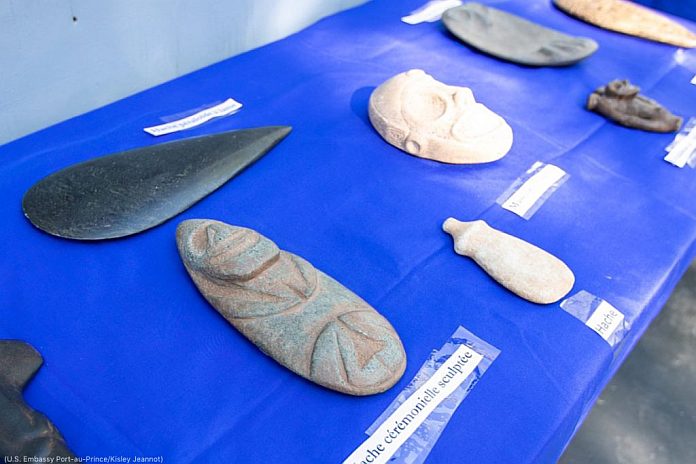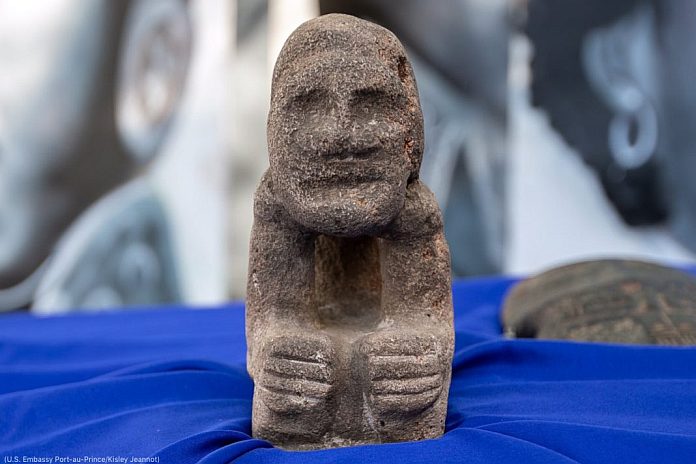By Noelani Kirschner
The United States has returned over 470 cultural and historical antiquities to Haiti — the largest repatriation of art from the US to Haiti — thanks to a bilateral effort between the two countries.
After the greatest single-source recovery of stolen artifacts in 2014, the FBI’s Art Crime Team was faced with the challenge of identifying and returning the 7,000 cultural objects to their countries of origin.
Roughly half of the objects were of Native American origin and the other half came from around the world, according to Supervisory Special Agent Tim Carpenter, the Art Crime Team leader.
“The first step was to notify all members of the UN that we had this material and we needed their help in identifying it,” Carpenter explained. “But we knew that [the collection of objects going to] Haiti was the largest repatriation that we were going to do.”

With the help of the State Department’s Cultural Heritage Center, the Smithsonian Institution, the US Embassy in Haiti and other cultural heritage experts, a team of 100 FBI agents identified over 470 artifacts that originated from Haiti.
Most of these objects were antiquities, hailing from the Taíno culture. The Taíno people were indigenous to the Caribbean before Christopher Columbus arrived in 1492 and by the mid–16th century had all but disappeared.
The Taíno objects are made of stone and natural materials, and collectively weigh about 2,300 kilograms. The Art Crime Team was careful to abide by museum standards when wrapping and processing the objects, since many of them were centuries old.
Finally, almost six years after the case began, the artifacts were returned to their home country on February 14. They are now in the care of the Haitian National Bureau of Ethnology.
The Art Crime Team continues to identify the remaining artifacts from the 2014 seizure. The Haitian antiquities would have taken even longer to return, had it not been for the behind-the-scenes coordination among organizations, says Carpenter.
“This was a team effort and it took everyone to get this job done,” Carpenter said. But the work was worth it, “because the objects do have meaning to people.”





